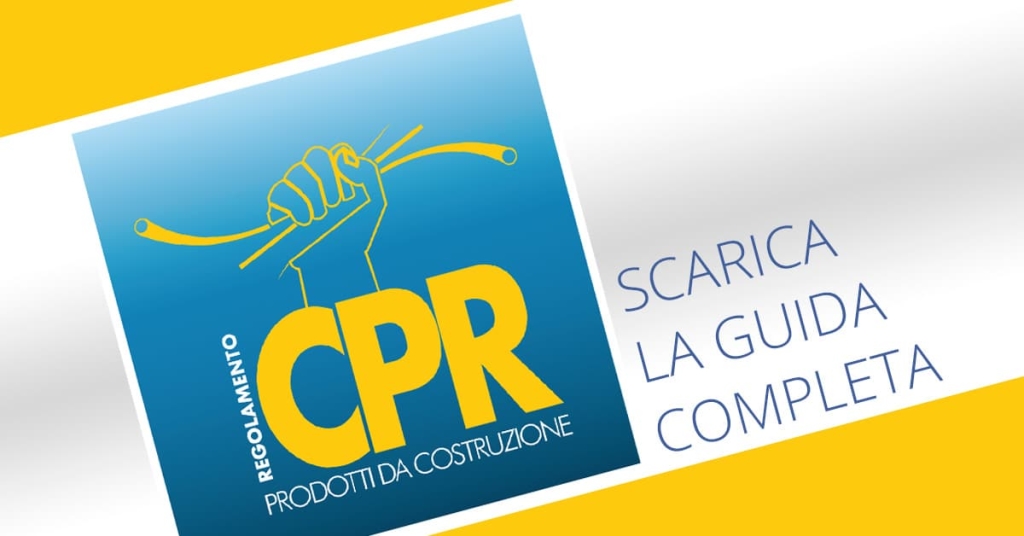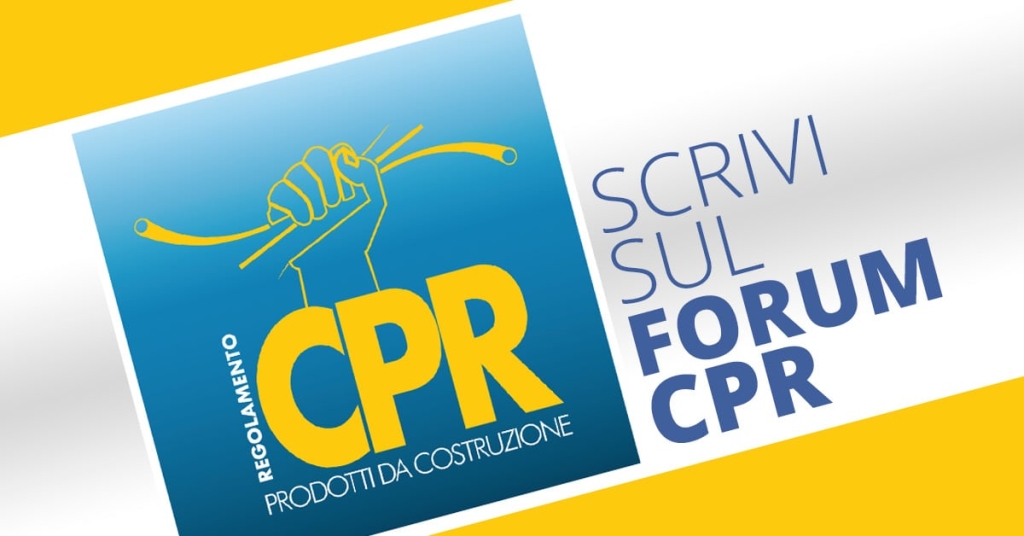CPR cavi Aggiornamenti 2020
 CPR cavi Aggiornamenti 2020. Sono ormai passati tre anni dall’entrata in vigore anche nel mondo dei cavi del Regolamento Prodotti da Costruzione (UE 305/2011) meglio conosciuto con l’acronimo CPR. L’entrata in vigore di tale regolamento, ha imposto una classificazione sui cavi installati “in modo permanente negli edifici e nelle altre opere di ingegneria civile”. Classificazione che ha sottoposto i cavi stessi a nuovi test per la verifica del comportamento al fuoco e all’incendio. La necessità di dover superare prove mai sostenute in precedenza (un esempio per tutti il gocciolamento durante l’incendio) ha fatto si che si dovessero usare tutta una serie di nuovi isolanti (gomme e PVC) e guaine (PVC) con performances notevolmente migliorate.
CPR cavi Aggiornamenti 2020. Sono ormai passati tre anni dall’entrata in vigore anche nel mondo dei cavi del Regolamento Prodotti da Costruzione (UE 305/2011) meglio conosciuto con l’acronimo CPR. L’entrata in vigore di tale regolamento, ha imposto una classificazione sui cavi installati “in modo permanente negli edifici e nelle altre opere di ingegneria civile”. Classificazione che ha sottoposto i cavi stessi a nuovi test per la verifica del comportamento al fuoco e all’incendio. La necessità di dover superare prove mai sostenute in precedenza (un esempio per tutti il gocciolamento durante l’incendio) ha fatto si che si dovessero usare tutta una serie di nuovi isolanti (gomme e PVC) e guaine (PVC) con performances notevolmente migliorate.
Il periodo di transizione
Dopo una prima fase di studio e di test, tutti i produttori hanno concentrato la loro attenzione sui cavi cosiddetti “di mercato”. Questi ultimi costituiscono il nocciolo dell’offerta commerciale. È stato così che già nel luglio del 2017 erano disponibili sul mercato le famiglie FG16OR16, FG16OM16 ed FS17 in sostituzione dei rispettivi FG7OR, FG7OM1 ed N07V-K. Per ottenere le certificazioni sui cavi ci sono voluti diversi mesi, a cominciare dai cavi FG17. Ciò ha generato una mancanza di prodotto, poiché i vecchi N07G9-K non erano più producibili ed i nuovi cavi non erano ancora disponibili e certificati. Costituiscono una fetta importante anche i cavi comunicazione, sia digitale che analogica, che sono il sistema neurale di qualunque edificio o struttura. A partire dalla prima metà del 2018 fino e tutto il 2019, i produttori hanno di volta in volta proposto i loro cavi UTP, FTP, fibra ottica con le più svariate classificazioni a partire dalla Eca fino alla più performante B2ca FTG18(O)M16, FTG18(o)H2M16.
CPR cavi elettrici aggiornamenti al 2020
Arriviamo così al 2020 con l’introduzione della nuova versione della norma CEI 20-45 che ha introdotto il nuovo cavo resistente al fuoco FTG18OM16 in categoria B2ca. CPR cavi quali soono gli Aggiornamenti 2020 ad oggi? Possiamo dire di aver coperto praticamente tutte le tipologie di cavi BT, segnalamento e trasmissione non dimenticando infine i cavi MT. Questi ultimi dalla fine del 2020 saranno esclusivamente in classe Cca. COM-CAVI, sin dagli esordi delle nuove tipologie di cavi ha cercato di essere costantemente aggiornata circa i prodotti del mercato. Attualmente possiamo affermare di avere una delle gamme prodotti certificate più complete, anche grazie alla consociata CABLES AND EQUIPMENTS, che è detentrice di tutta una serie di certificazioni CPR sui cavi strumentazione. Sono certamente il nostro vanto le famiglie di cavi strumentali FG16XHOHM16 armati e non, ma anche e soprattutto gli FG16OH2R16 Cca s1, d1, a1 . Tuttavia, il nostro fiore all’occhiello è costituito dal cavo AFG16OM16 in alluminio flessibile che combina in un unico cavo la leggerezza e la competitività dell’alluminio con la flessibilità e la facilità di installazione del rame. Grazie ad un grande sforzo tecnico siamo riusciti a certificare in classe Cca s1, d1, a1 il nostro prodotto. Poniamo quindi alla luce dell’attuale situazione, di aver completato la transizione durata più di tre anni. Ad oggi abbiamo rimodellato completamente tutte le famiglie di cavo ad esclusivo vantaggio della sicurezza.
CPR Electrical cables. Updates to 2020 It’s been three years since the entry into force, also in the world of cables, of the construction products regulation (UE 305/2011) better known by the acronym CPR. As many know, the entry into force of this regulation has imposed permanently a classification on cables in buildings and in other civil engineering works, subjecting thus the cables themselves to new tests for the verification of fire resistance. The need to overcome tests never sustained before (as the dripping during fire) meant that a whole series of new insulators (rubbers and PVC) and sheaths (PVC) with improved performance had to be used. After an initial phase of study and testing, the producers all focused their attention on the so-called market cables which obviously constitute the hard core of the commercial offer of the different companies. Thus, already in July 2017 the FG16OR16, FG16OM16 and FS17 families were available on the market to replace the older FG7OR, FG7OM1 and N07V-K respectively. But after this first step, even if important, we found ourselves facing a brand new world starting with the FG17 cables for which we had to wait a few months before having them certified, generating a new type of product (the old N07G9-K were no longer produced and the new cables were not yet available and certified) and then continuing for all the digital and analogic communication cables that represent the neural system of any building or structure. Consequently, during the first half of 2018 up to 2019 the manufacturers have, from time to time, proposed their UTP, FTP, optical fiber cables with the most varied classifications starting from the Eca up to the most performing one: the B2ca. Therefore, we arrive to 2020 with the introduction of the new version of the CEI 20-45 standard which established the new fire resistant cable FTG18OM16, FTG18(O)H2M16 in category B2ca.
CPR for electrical cables, today
Today, we can claim that we have covered in practice all types of signaling, transmission and LV cables not forgetting the MV cables which from the end of 2020 will be exclusively in class Cca. COM-CAVI, since the beginning of the introduction of the new types of cables in the market, has tried to be constantly updated and to perpetually study the product. Today we can say that we have one of the most complete certified product ranges also thanks to our subsidiary CABLES AND EQUIPMENTS which is the owner of a whole series of CPR certifications on instrumental cables. Certainly, our pride is the families of instrumental cables FG16XHOHM16 both armoured and without it but also and above all the FG16OH2R16 Cca s1, d1, a1. However, our strongest point is represented by the AFG16OM16 flexible aluminium cable that concentrates the lightness and competitiveness of aluminium and the flexibility and ease of installation of copper. Thanks to a great technical effort we were able to certify our product in class Cca s1, d1, a1. Hence, we are back to the present day and we can proudly affirm that we have completed the transition that has taken almost three years and that has brought a complete remodelling and revolution of cable families for the exclusive benefit of security and safety.




Scrivi un commento
Devi accedere, per commentare.